Historical Figures in Israel
Whether the connection is religious, literary, biblical or political, many a famous historical figure has come out of the land of Israel - both from the pages of the Bible (thousands of years ago) and more contemporary times. ‘The Jewish People’ - after all - have been around from the time of Abraham, which is some history!
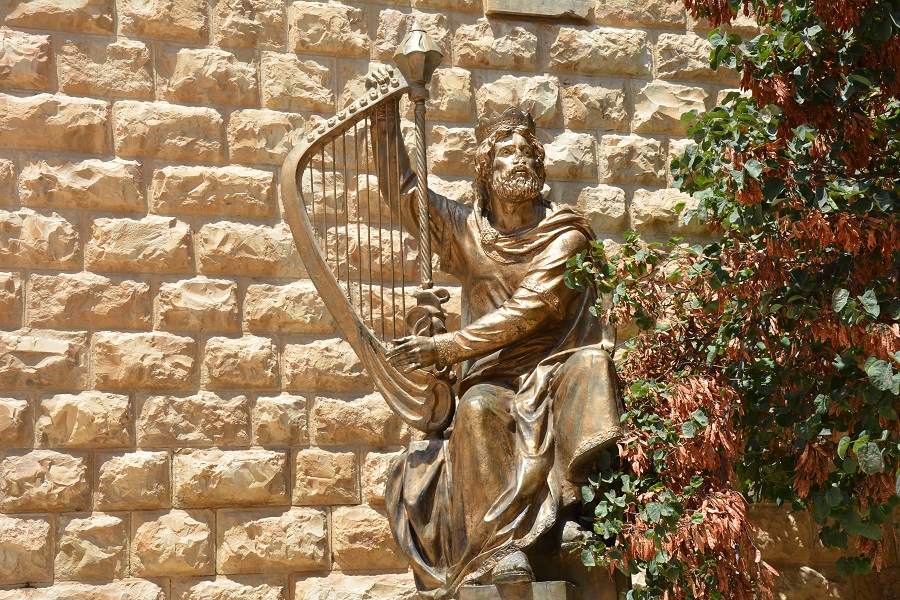
David Playing the Harp Before Saul, Mount Zion, Jerusalem. Photo credit: © Shutterstock
Israel is particularly astonishing - when you think about it - because the Jews who live there are speaking the same language, living in the same land, and worshipping the same God from thousands of years ago. No wonder then taking a vacation to Israel is so popular - it is a way of seeing for yourself the continuing of a rich cultural tradition that has passed down through endless generations.
Here, we look at some well-known characters that every Israeli child learns about in first grade - both from biblical times and in the history of modern-day Israel. Each one of them, in their own exceptional way, played their part in making an enormous contribution to the country that exists today.
That’s also why Israel has a tradition of naming streets, squares, highways, bridges, museums, and even scientific institutes after them. Yes, this is very common and it’s something quite extremely noticeable when you’re traveling in Israel, whether on a tour of Jerusalem, exploring Tel Aviv and Jaffa, or even just wandering around small towns in the Galilee or Negev desert. Without further ado, let’s take a look:
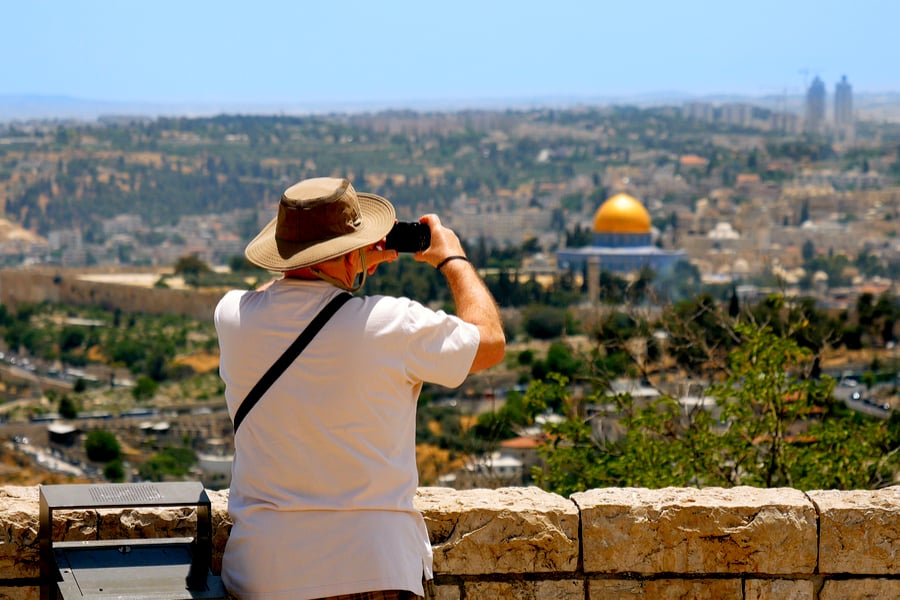
Tourist at Mount Scopus observation point, Jerusalem. Photo credit: © Shutterstock
1. King David, the legendary great from Israeli history
King David was the Second King of Israel, who founded the Judean dynasty. Under his rule, all the tribes were united, which is why his rule is often looked back on as a ‘Golden era’. Born to humble origins (a shepherd boy) he killed Goliath with nothing more than a slingshot and a stone and, according to the Hebrew Bible, since being anointed by Samuel was protected from harm by God himself.
There are numerous references to David today, in Jerusalem, including the Tower of David, King David’s Tomb, and the 3,000-year-old underground City of David. The Bridge of Chords (which you will see, as you drive into Jerusalem) is an architectural masterpiece, deliberately shaped to look like King David’s harp - the cables being the strings. An excellent way to explore King David's Jerusalem is with a City of David Jerusalem Tour.
2. King Solomon, the most famous Israeli historical personality
Both wealthy and wise, King Solomon came to the throne after his father David, in around 970 BCE. According to the Hebrew Bible, he was responsible for the building of the First Temple in Jerusalem, which he dedicated to the God Yahweh. After this, he is said to have erected many other important buildings in the city, including a Royal Palace.
The First Temple was eventually destroyed by the Babylonians, razed to the ground in 587/586 BCE. Today, even after archaeological excavations, little remains (it is probably buried under the Western Wall) but the entire area, including Jerusalem Temple Mount and Dome of the Rock (extremely holy both to Jews and Muslims) can be visited in the course of the Jerusalem Temple Mount & Dome of the Rock Tour.

Entrance to King David's Tomb, Mount Zion, Jerusalem. Photo credit: © Shutterstock
3. Judas Maccabeus
Judas Maccabeus (also spelled ‘Judah Maccabee’) was a Jewish Priest who led a revolt against an invasion by King Antioch IV, to prevent the imposition of Hellenism in what was then Judea, therefore reconsecrating the Temple and helping preserve the Jewish religion. This great military deed of his is remembered by Jews each year when celebrating Hanukkah - the ‘Festival of Lights’.
Many things today in Israel remind us of him - the football teams named after him, the Maccabi health fund (which ensures millions of Israelis), and the Maccabiah games - a kind of ‘Jewish Olympics.’ To learn more about Judas, and his brave Maccabean followers, it’s really worth taking a tour of Masada the ancient desert fortress at which the Jews made a last, brave stand against the Romans.
4. Josephus
Titus Flavius Josephus was born in Jerusalem in 37 CE to a family of noble lineage - his father was descended from Priests and his mother claimed Royal ancestry. Initially fighting against the Romans in the Galilee, the First Jewish-Roman War, he later defected to the Romans and was granted citizenship by them.
Josephus’ most famous work was ‘The Jewish War’ where he recounts in brilliant detail the manner in which the Jews revolted. For scholars, these writings are a valuable insight into first-century Judaism and also early Christianity. They give great context for anyone seeking to understand more about the revolt at Masada and the Dead Sea Scrolls, as well as Jewish customs and life inside the Temple. 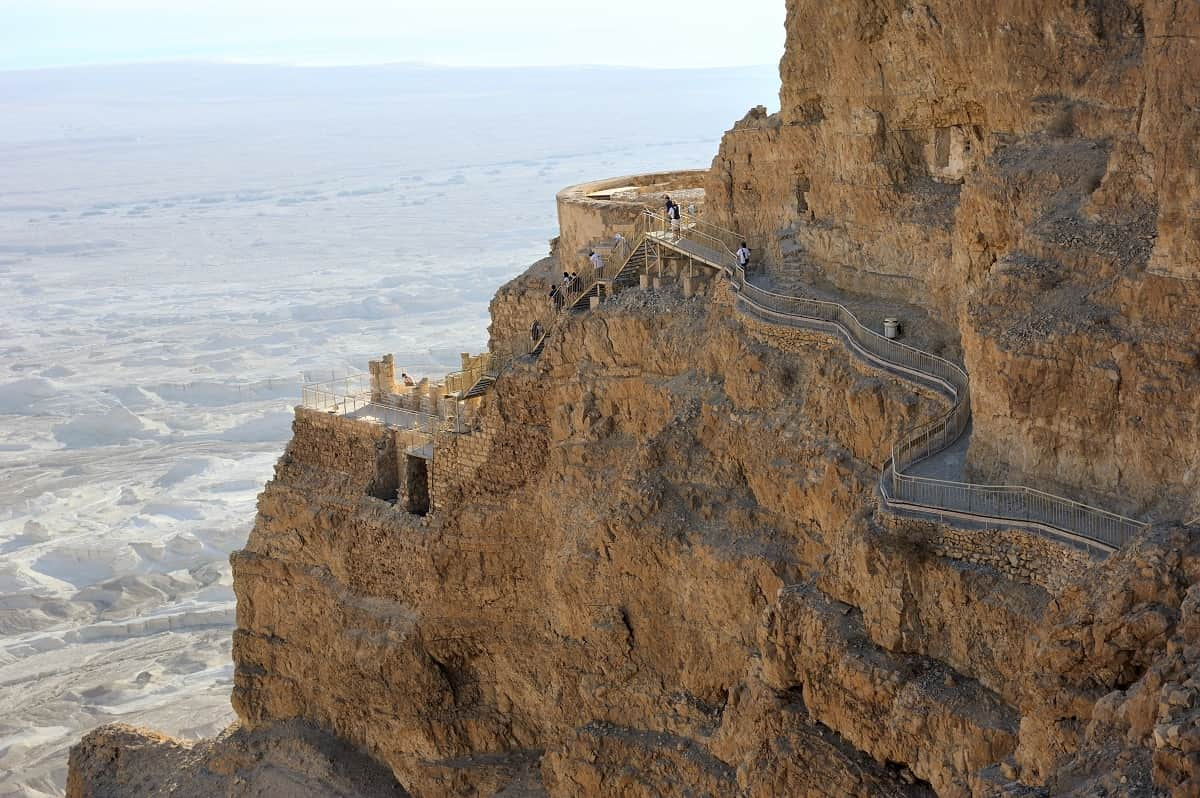
Masada National Park, Herod's Palace Complex. Photo credit: © Shutterstock
5. Herod the Great
King Herod 1 (also known as Herod the Great) was a Roman King who is known for his enormous building projects throughout Judea, in particular the erection of the Second Temple in Jerusalem. Details of his life are recorded by Josephus (see above) and in the Gospel of Matthew, in the Christian Bible, it is said that he was directly responsible for the massacre of thousands of baby boys at the time of the birth of Jesus.
Herodian architecture is everywhere in Israel, including famous sites such as the Western Wall, the ancient port of Caesarea, Herodion, the Tomb of the Patriarchs in Hebron, Masada, and temples dedicated to Augustus (at Sebastia, Caesarea, and Banias). For any history buff or lover of archaeology, you couldn’t do better than to take out In the Footsteps of Herod Private Tour.
6. John the Baptist
John the Baptist was a Jewish prophet, born in 1 BCE and quite possibly a member of the Essene sect. Said to have lived on wild honey and locusts, he preached widely about the final judgment of God and was responsible for the baptism of many ‘repenters.’ Even though Jesus was technically sinless (as the Son of God) John baptized him and many Christians believe that this ritual filled Jesus with the Holy Spirit.Today, Christian pilgrims flock to Yardenit - Israel’s most famous baptismal site - located on the shores of the Sea of Galilee and next to the River Jordan - to undergo this sacred ritual personally. Bein Harims also offers a tour of Nazareth and Galilee, which is an ideal way to learn more about the life and times of Jesus. There is also the possibility of visiting the more intimate baptismal site of Qasr al-Yahud, as part of a tour of Jericho and the Dead Sea area.
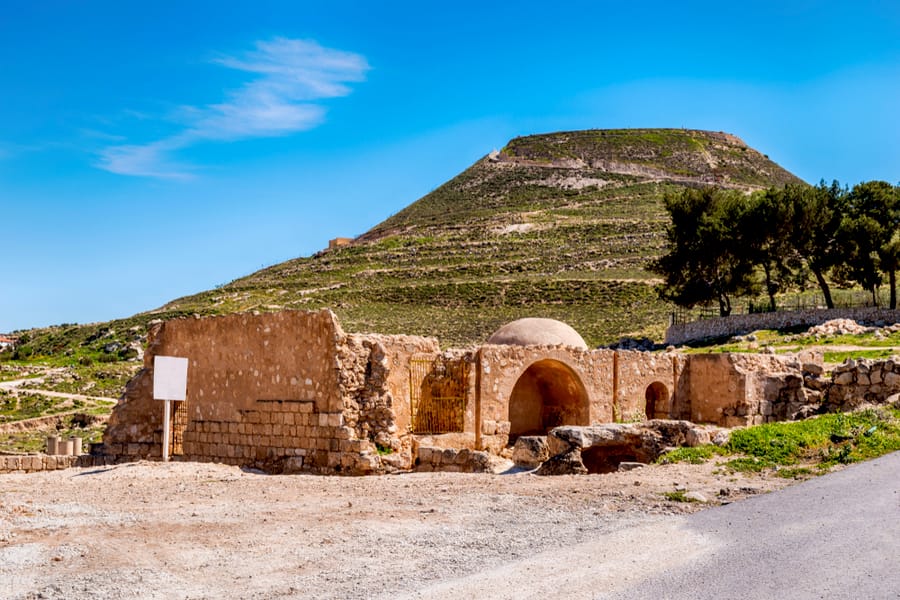
The ruins of King Herod's bathrooms in Herodion, West Bank. Photo credit: © Shutterstock
7. Jesus of Nazareth
Does Jesus really need an introduction? The central figure in the Christian religion, whether you believe he was the Son of God or just a radical preacher who was condemned to death for heresy, he’s a central figure in the Holy Land and reminders of his remarkable life and times surround you, whichever way you turn.
Many tourists in Jerusalem choose to walk in the footsteps of Jesus, retracing his steps in the last week before his death, exploring landmarks such as the Garden of Gethsemane, the Via Dolorosa, and the Church of the Holy Sepulchre.
It’s also possible to take a tour of Bethlehem (his birthplace) or travel north and explore both Nazareth (where he spent his early years) and Galilee, where he found his disciples and ministered to crowds. You don’t have to be religious to be fascinated by this man’s extraordinary life.
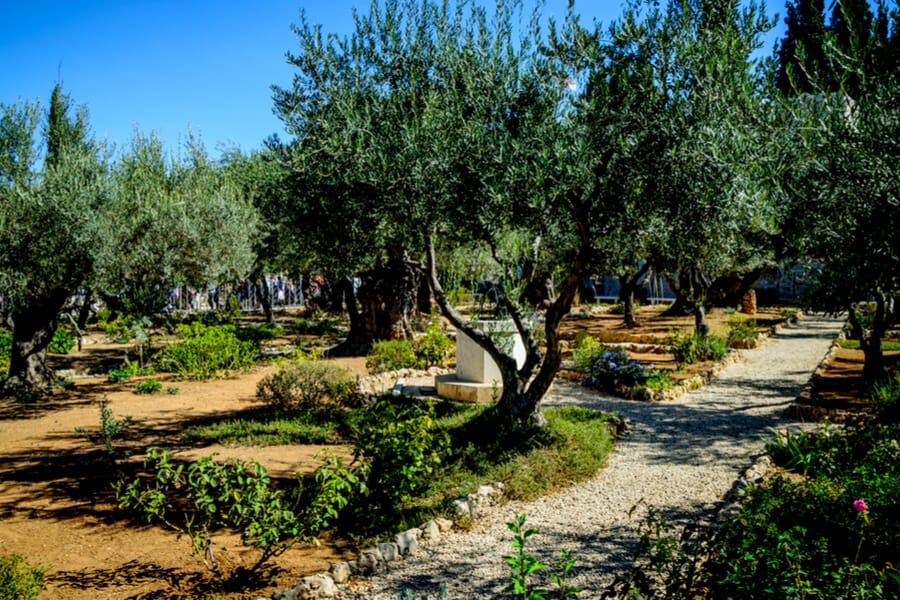
Gethsemane Garden, Jerusalem. Photo credit: © Shutterstock
8. Pontius Pilate
Pontius Pilate was the fifth governor of the Roman province of Judea, at the time of Jesus’ death. Little is known about his early years, or how he rose to prominence. He is known best for being the official who presided over Jesus’s trial and subsequently ordered that he be put to death, by way of crucifixion.
The Christian Bible often represents Pilate as being ambivalent - even reluctant - about his actions in condemning Jesus (pointing to the fact that he asked the crowd their wishes and then washed his hands i.e. absolving himself from his actions). Today, he is venerated by the Ethiopian Church as a saint.
The Praetorium (buried underneath an Ottoman prison, the Kishle, next to the Tower of David) is thought by archaeologists to be the place where Pilate made his famous decision and can easily be explored on any private tour of Jerusalem.

Kishle, the Possible Site of Jesus’ Trial, Jerusalem. Photo credit: © Dmitry Mishin
9. David Ben-Gurion
David Ben Gurion was Israel’s first Prime Minister after it became an independent state widely regarded as one of its ‘founding fathers’ of the state. It was Ben Gurion who proclaimed the Declaration of Independence, in Tel Aviv, in 1948 and who oversaw the absorption of huge numbers of Jews in the early years of Israel’s existence.
Ben Gurion served as Prime Minister and Defence Minister of Israel for many years. During this time, he lived in Tel Aviv, in a small unassuming house, which today is a museum showcasing his life. Filled with books, it gives an indication of just how learned he was. In 1970, he moved to the Kibbutz Sde Boker, in the Negev desert, since he had a deep belief that Zionism entailed settling barren areas. He is buried there and his grave in kibbutz Sde Boker and Ben Gurion's house in Tel Aviv can be easily visited.
10. Teddy Kollek
Teddy Kollek was an Israeli politician who famously served as Mayor of Jerusalem between 1965 and 1993. The old adage about him was that he was ‘the greatest builder in Jerusalem since Herod’ because of his interest in redeveloping and modernizing the city. Kollek dedicated himself to many cultural projects, particularly those relating to the Israel Museum and Jerusalem Biblical Zoo (today, two of Jerusalem’s most visited attractions).

Jerusalem Biblical Zoo. Photo credit: © Dmitry Mishin
11. Theodor Herzl
Theodor Herzl was not just a journalist and playwright, but also the father of modern Zionism. Born in Budapest, he moved to Paris at the end of the 19th century, and witnessing the aftermath of the scandalous ‘Dreyfus Affair’ convinced him that the only way for Jews to avoid anti-semitism was to create a Jewish state.
From this point on, Herzl devoted himself to this vision, visiting Jerusalem finally in 1898. Herzl never lived to see his dream realized, dying in 1904, but Israel celebrates him annually with ‘Herzl Day’ in the Hebrew month of Iyar. Mount Herzl in Jerusalem where Theodor Herzl is buried and the town of Herzliya with its beautiful marina are named after him.
12. Meir Dizengoff
Meir Dizengoff was born in Russia in 1881 and was one of the early Zionist leaders of his day. A great advocate of establishing Jewish communities in Palestine, particularly Tel Aviv, he was widely regarded as a great leader at that time and many world leaders (including Winston Churchill) who visited Palestine were impressed by him. He was actually one of the families who founded Tel Aviv, on its sand dunes, in 1909.
Dizengoff later became Mayor of the city and kept that office until just before he died. Today, Tel Aviv’s largest street is named after him - running through the heart of the city, Dizengoff Street is famous for its cafes, restaurants, boutiques, and 24/7 activity. His home was the spot at which Ben Gurion made his famous declaration and today is a history museum known as the Hall of Independence. It can be visited with some of Tel Aviv tours.
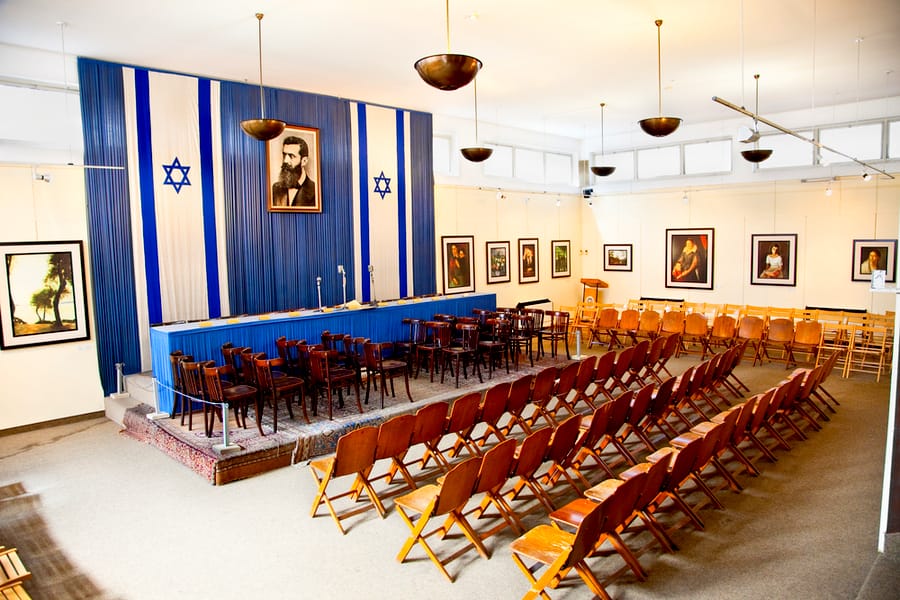
The Hall of Independence, Tel Aviv. Photo credit: © Shutterstock
13. Yitzhak Rabin
Yitzhak Rabin was a military leader, politician, and statesman, who became famous in Israel as the Labour Leader who signed the Oslo Accords, in conjunction with Yasser Arafat’s PLO, and was, soon after, assassinated by a radical right-wing Jew. Rabin was Chief of the Southern Front in the 1948 War of Independence in 1948, and in 1964 was appointed Chief of Staff of the Israeli Army. In 1994, a year before his murder, he was awarded the Nobel Peace Prize.
Tel Aviv’s famous central square was afterward renamed Yitzhak Rabin Square and in 2005, ten years after his death, the Yitzhak Rabin Center was inaugurated. Part of this is a museum that explores the history of Israeli society, using Rabin as a connecting theme.
14. Yigal Allon
Yigal Allon was an Israeli military leader who, after a celebrated career, became a Labour politician. He is well-known as the architect of the ‘Allon Plan’ which was a peace initiative formed by him in 1967, after Israeli captured territories in the Six-Day War. The Yigal Allon Museum, at Kibbutz Ginosar in Galilee, is open to visitors and a major highway in Israel is also named after him.
15. Chaim Weizmann
Born in Russia, Chaim Weizmann was the President of the Zionist Organisation and then the first President of the State of Israel. It was Weizmann who was widely acknowledged as being the person who persuaded the USA to recognize Israel, after its establishment in 1948. A biochemist by profession, the Weizmann Institute in Rehovot - is today, a worldwide leader in scientific research and an excellent tribute to him.
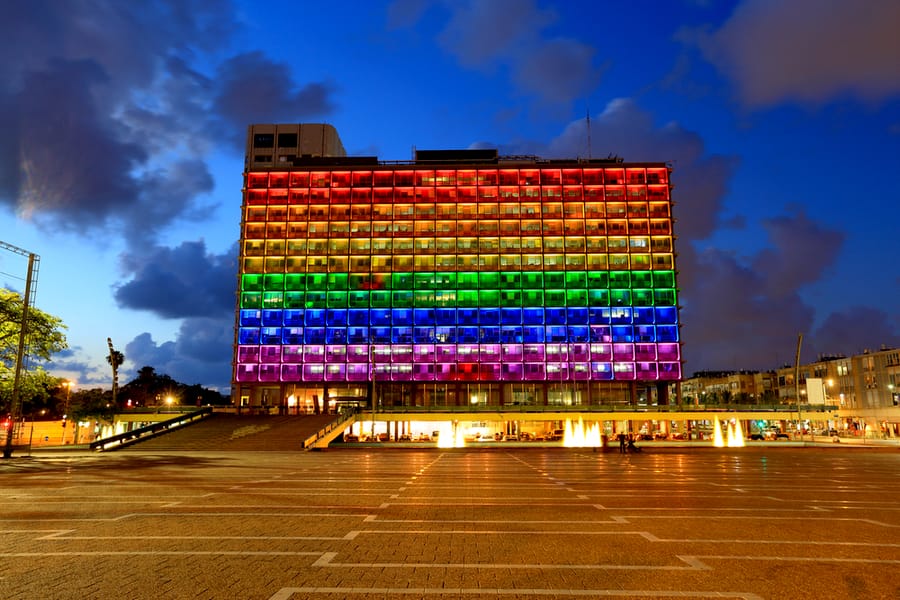
Tel Aviv City Hall with rainbow flag projection, Rabin Square. Photo credit: © Shutterstock
 Login / Register
Login / Register
 Contact Us
Contact Us
 Certificate of Excellence
Certificate of Excellence Guaranteed Departure
Guaranteed Departure Low Prices Guaranteed
Low Prices Guaranteed 24/7 Support
24/7 Support




